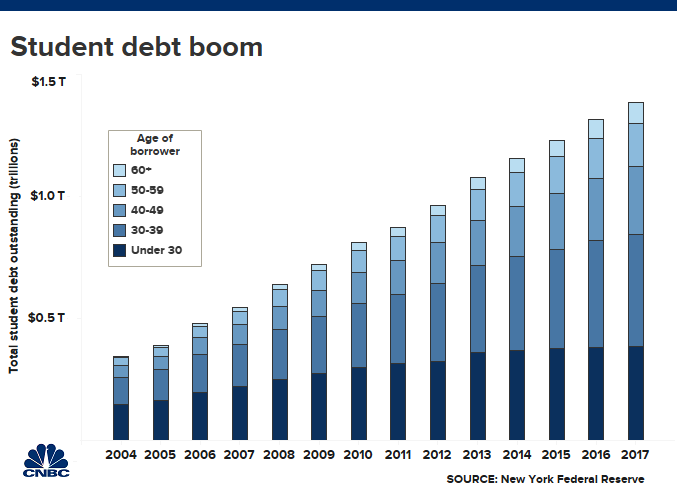A secure financial future is what most Americans hope to get with their college degree. More than 80% of freshmen students say they pursued higher education “to be able to get a better job.” Another popular reason? “To make more money.”
Many college students, then, are likely to be disappointed.
That’s because half of the country’s schools in 2018 left the majority of their former students earning less than $28,000 a year, which is what the typical high school graduate makes. The finding comes from a new report by Third Way, a think tank in Washington, D.C.
“I think anyone should be surprised by that,” said Michael Itzkowitz, a senior fellow at Third Way. “What this shows is that institutions across the United States are not meeting the main expectations of today’s students.
“While there are a lot of intangible benefits of attending an institution of higher education, we should also expect that students are getting at least a minimum return on their educational investment,” he added.
The think tank analyzed the earnings data of students from nearly 4,000 colleges.

All kinds of colleges led to underwhelming salaries, Third Way found.
However, for-profit schools are 10 times more likely than private or public colleges to have the vast majority of their students earning below $28,000 a year, according to Itzkowitz.
“By far, the for-profit sector shares some of the most worrisome employment outcomes within higher education today,” Itzkowitz said.
There are some 7,000 for-profit schools in the U.S, which take in around 15% of the government’s financial aid funding.
More from Personal Finance:
Is debt a dealbreaker? Couples say it depends on the type
For young couples, money woes take a heavy toll
1 in 8 couples blame student loan debt for their divorce
To make matters worse, colleges are charging more now than ever.
One year at a nonprofit private school, including tuition, room and board, currently costs $48,510, compared with $22,240 in 2000. And so students graduate with more debt — around $30,000 on average. Around 30% student borrowers are in delinquency or default.
“Without an opportunity to earn a decent living, it’s going to be increasingly difficult to pay down their educational debt over time,” Itzkowitz said.
Education Secretary Betsy DeVos in June repealed the gainful employment rule, an Obama-era regulation aimed at holding low-quality education programs accountable by forcing them to prove their graduates were able to repay their student debt.
 EU News Digest Latest News & Updates
EU News Digest Latest News & Updates



